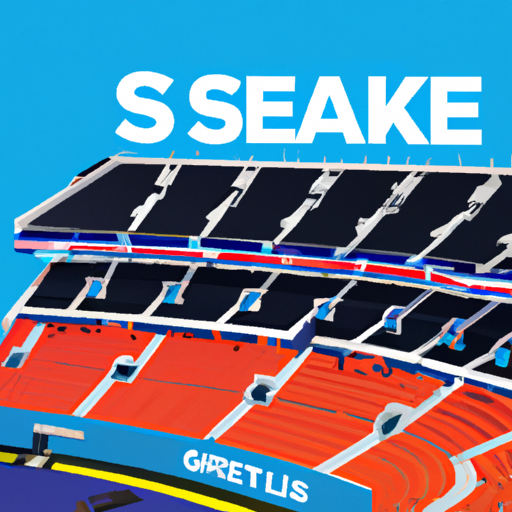The History of Advertising: From Ancient Times to Modern Days
As a history enthusiast, I am here to take you on an exhilarating journey through the captivating story of advertising.
Brace yourself for tales that span from ancient civilizations to the cutting-edge world we now inhabit.
From the humble beginnings of town criers and tavern signs to the powerful influence of social media and personalized technology, we will explore how advertising has evolved and shaped our lives.
So, fasten your seatbelts and prepare to be amazed by the history of advertising from ancient times to modern days.
Key Takeaways
- Visual symbols and imagery have been used in advertising since ancient times, demonstrating the power of visual communication.
- The invention of the printing press revolutionized advertising, allowing for targeted marketing and the integration of advertisements into newspapers and magazines.
- Advertising has had a significant impact on society, including increasing literacy rates, shaping educational materials, perpetuating stereotypes, and revolutionizing the spread of information.
- Technological advancements in advertising, such as data analysis, personalized technology, influencer marketing, and digital billboards, have opened up new opportunities for creativity and engagement.
The Beginnings of Advertising: Ancient Times
I’ve always been fascinated by the origins of advertising in ancient times. It’s intriguing to think about how people in ancient civilizations used advertising techniques to communicate their messages and influence consumer behavior.
In ancient Egypt, for example, advertising was primarily done through word of mouth. Shopkeepers and merchants would spread the word about their products by talking to customers and offering samples. They’d also create eye-catching signs and displays to attract attention.
In ancient Greece, advertising took on a more formalized approach. Merchants would hire town criers to announce their products and services in public spaces. They’d also use stone carvings and paintings to showcase their offerings. Additionally, ancient Greeks used symbols and logos to represent their businesses, much like modern-day logos.
The impact of ancient advertising on consumer behavior was significant. People were more likely to purchase products or services that were well-advertised and had a strong reputation. Ancient advertising also played a role in shaping consumer preferences and creating brand loyalty.
Overall, the advertising techniques used in ancient times laid the foundation for the modern advertising industry. They showed us the power of effective communication and the influence it can have on consumer behavior.
Advertising in Ancient Egypt
During my research, I discovered that in Ancient Egypt, merchants utilized papyrus to create promotional messages for their goods. The advertising techniques in ancient Egypt were quite fascinating, and the impact of symbols in ancient Egyptian advertising was significant. Here are some key points I found:
- Symbols: Ancient Egyptians used symbols extensively in their advertising. They believed that symbols had a powerful influence on the human mind and could convey messages more effectively than words alone.
- Visuals: The use of visuals was a common advertising technique in ancient Egypt. Merchants would depict images of their products or scenes that portrayed the benefits of using their goods.
- Hieroglyphics: Hieroglyphics, the ancient Egyptian writing system, played a crucial role in advertising. Merchants would incorporate hieroglyphics into their promotional messages to communicate their offerings effectively.
- Papyrus: Papyrus, a type of paper made from the papyrus plant, was the primary medium for creating advertising messages. Merchants would write or paint their promotional messages on papyrus scrolls and distribute them to potential customers.
The advertising techniques in ancient Egypt were innovative for their time and laid the foundation for modern advertising practices. The impact of symbols in ancient Egyptian advertising demonstrated the power of visual communication in influencing consumer behavior.
Early Forms of Advertising in Greece and Rome
While researching the early forms of advertising in Greece and Rome, I found that both civilizations utilized various methods to promote their goods and services. The early advertising techniques used by these ancient civilizations were quite diverse and innovative for their time.
In Greece, one of the common forms of advertising was through the use of signs and posters. These signs were strategically placed in public spaces to attract the attention of passersby. Additionally, ancient Greeks also made use of town criers to spread information about products and services.
In Rome, on the other hand, advertising took the form of painted wall advertisements known as ‘latrunculi.’ These advertisements were painted on the walls of buildings and provided information about the goods or services being offered. The Romans also utilized inscriptions on public buildings and monuments to advertise various products.
These early advertising techniques used by the ancient Greeks and Romans laid the foundation for the future development of advertising as a communication tool. Transitioning into the subsequent section about ‘medieval advertising: from town criers to tavern signs’, it’s evident that advertising continued to evolve and adapt with the changing times.
Medieval Advertising: From Town Criers to Tavern Signs
Medieval advertising saw a shift from relying solely on oral communication to the use of physical signage. During this period, shop owners began using pre-printed signs to attract customers and distinguish their establishments.
Additionally, town criers played a crucial role in disseminating information and promoting local businesses.
Lastly, tavern signs emerged as a common form of advertising, using visual symbols and imagery to entice passersby into these establishments.
Pre-Printed Shop Signs
I’ve always been fascinated by how pre-printed shop signs revolutionized advertising in the past. These signs, which were mass-produced and displayed outside of shops, played a crucial role in attracting customers and promoting businesses.
Here are some key aspects of pre-printed shop signs and their impact on advertising techniques:
- Visibility: Shop signs were strategically placed in highly visible locations to catch the attention of passersby.
- Branding: These signs featured distinct logos and designs, helping to establish brand identity and differentiate businesses from competitors.
- Information: Pre-printed shop signs often included important details such as the type of products or services offered, operating hours, and contact information.
- Targeted Advertising: By displaying specific visuals and messages, shop signs targeted specific customer segments, appealing to their needs and preferences.
The rise of pre-printed shop signs marked a significant shift in advertising, paving the way for new techniques and strategies. However, they weren’t the only means of communication in the past.
Let’s now delve into the role of town criers in advertising.
Role of Town Criers
As a researcher, I found it fascinating to learn about the important role town criers played in disseminating information and announcements to the public in the past. Town criers were essential figures in local communities, serving as the primary means of communication before the advent of mass media. They’d gather people in public spaces to deliver news, proclamations, and other important messages. Their impact on local communities can’t be overstated, as they ensured that vital information reached everyone, regardless of their literacy levels.
Over time, the profession of town criers evolved, adapting to changing societal needs. While they were once solely responsible for relaying official announcements, they later began incorporating advertising into their duties as well. This transition set the stage for the subsequent section on advertising on taverns, where town criers played a crucial role in promoting businesses and events.
Advertising on Taverns
Growing up, tavern signs always caught my attention with their colorful designs and clever depictions. Tavern signage has been an effective advertising strategy for centuries, grabbing the attention of passersby and enticing them to enter.
Here are some key reasons why tavern signs have been successful:
- Visibility: Tavern signs are often placed in prominent locations, making them easily visible to potential customers.
- Creativity: The colorful designs and clever depictions on tavern signs make them stand out from other forms of advertising.
- Symbolism: Tavern signs often incorporate symbols and imagery that convey a message or represent the establishment’s offerings.
- Memorability: The unique and eye-catching nature of tavern signs helps them to be remembered by people passing by.
These advertising strategies have made tavern signage a powerful tool for attracting customers to these establishments.
The Birth of Print Advertising: Gutenberg’s Printing Press
The birth of print advertising can be traced back to Johannes Gutenberg’s invention of the printing press in the 15th century. This revolutionary technology allowed for the mass production of books and pamphlets, opening up new possibilities for spreading information and ideas.
With the printing press, advertising became more widespread and accessible, leading to an increase in literacy rates and the commercialization of printed media.
Impact on Literacy Rates
I can see how advertising has influenced literacy rates throughout history. It’s undeniable that the impact of advertising on education and literacy has been significant. Here are some key points to consider:
- Advertising has promoted products and services, which in turn has created a demand for literacy skills. People need to be able to read and understand advertisements in order to make informed choices.
- Advertising has also played a role in shaping the content and format of educational materials. Advertisements often include persuasive language and visual elements that can engage and motivate learners.
- On the other hand, advertising can also be a distraction from educational activities. In today’s digital age, students are constantly exposed to advertisements online, which can divert their attention away from learning.
- Additionally, advertising can perpetuate stereotypes and biases, which can negatively impact educational opportunities for certain groups. Advertisements that promote gender, racial, or socioeconomic stereotypes can contribute to unequal access to education.
Spread of Information
As a student, it’s fascinating to see how the spread of information has been influenced by various factors.
One of the key driving forces behind the spread of information is the evolution of advertising techniques. Throughout history, advertising has played a crucial role in disseminating information to the masses. From the ancient times when simple signs and symbols were used to convey messages, to the modern days where digital platforms dominate, advertising has continually adapted to reach a wider audience.
The development of printing technology in the 15th century revolutionized the way information was spread, allowing for the mass production of printed materials such as newspapers and pamphlets. This paved the way for the commercialization of printed media, which will be explored in the subsequent section.
Commercialization of Printed Media
Growing up, it’s been interesting to witness how printed media has become increasingly commercialized. The commercialization of printed media has led to the evolution of advertising techniques, revolutionizing the way businesses promote their products and services. Here are some key aspects of this transformation:
- Integration of advertisements: Advertisements are now seamlessly integrated into printed media, such as newspapers, magazines, and even books.
- Targeted advertising: Advertisers now have the ability to target specific demographics and reach their desired audience more effectively.
- Increased competition: With the rise of commercialization, there’s been a significant increase in the number of advertisements, leading to a more competitive marketplace.
- Innovation in design: Advertisements have become more visually appealing and attention-grabbing, utilizing creative layouts and eye-catching graphics.
As the commercialization of printed media continues to evolve, it’s fascinating to see how advertising techniques adapt to the changing landscape.
Now, let’s explore the advertising strategies employed during the Renaissance period, specifically through the use of broadsides and pamphlets.
Advertising in the Renaissance: Broadsides and Pamphlets
During the Renaissance, I’m fascinated by the emergence of broadsides and pamphlets as popular forms of advertising. These printed materials played a crucial role in disseminating information and promoting products or events. Their effectiveness as advertising tools can be attributed to several factors, including their wide distribution, visual appeal, and ability to convey detailed information.
| Advertising Format | Advertising Effectiveness | Evolution of Advertising Formats |
|---|---|---|
| Broadsides | Highly effective | Traditional form of advertising |
| Pamphlets | Moderately effective | Evolved from broadsides |
Broadsides were large, single-sheet posters that were prominently displayed in public places such as market squares or religious centers. They were eye-catching and could easily capture the attention of passersby. Their size allowed for detailed illustrations, catchy headlines, and persuasive messages. Broadsides were particularly effective for promoting events such as fairs, festivals, or theatrical performances.
Pamphlets, on the other hand, were smaller booklets that contained more extensive information. They were often used to advertise books, medicines, or political ideas. While not as visually striking as broadsides, pamphlets had the advantage of providing in-depth details about the product or event being advertised. This allowed potential customers to make informed decisions and increased the likelihood of a successful sale.
Overall, the emergence of broadsides and pamphlets as advertising formats during the Renaissance marked a significant evolution in the field of advertising. These printed materials were highly effective in reaching a wide audience and played a crucial role in shaping the advertising industry as we know it today.
The Rise of Advertising Agencies in the 19th Century
I was fascinated by the rise of advertising agencies in the 19th century, as they revolutionized the way products and services were marketed. During this time, the demand for advertising grew rapidly, leading to the emergence of specialized agencies that helped businesses reach their target audience more effectively.
Here are some key factors that contributed to the rise of professional advertisers:
- Industrialization: The industrial revolution brought about mass production, creating a need to sell products on a larger scale. Advertising agencies stepped in to assist businesses with promoting their goods to a wider audience.
- Technological advancements: The 19th century witnessed significant advancements in printing technology, such as lithography and chromolithography. This made it easier and more affordable to produce visually appealing advertisements, further fueling the growth of advertising agencies.
- Urbanization: With the rise of cities, businesses faced increased competition. Advertising agencies offered their expertise in creating eye-catching advertisements that would help companies stand out in crowded marketplaces.
- Changing consumer culture: As society shifted towards a more consumer-driven culture, businesses recognized the importance of targeting specific demographics. Advertising agencies played a crucial role in understanding consumer behavior and tailoring advertisements to appeal to different segments of the population.
Overall, the rise of advertising agencies in the 19th century marked a significant turning point in the history of marketing. These agencies not only helped businesses reach a wider audience but also paved the way for modern advertising practices that continue to shape the industry today.
Industrial Revolution and the Impact on Advertising
During the Industrial Revolution, advertising underwent significant changes that had a profound impact on urbanization and the rise of consumer culture. As factories and industries boomed, people flocked to cities in search of employment.
This influx of people led to the rapid expansion of urban areas, creating a concentrated population that was ideal for advertising efforts.
The Industrial Revolution also played a crucial role in the rise of consumer culture. With the development of mass production techniques, goods became more affordable and accessible to the general public.
As a result, people began to identify themselves through their consumption habits, and advertisers seized this opportunity to promote their products and create brand loyalty. Advertising campaigns focused on creating desire and aspiration, appealing to people’s newfound purchasing power.
Furthermore, the Industrial Revolution brought about technological advancements that greatly facilitated advertising. The invention of the printing press revolutionized the industry by allowing for the mass production of newspapers and magazines.
This enabled advertisers to reach a wider audience and disseminate their messages more effectively.
The Birth of Modern Advertising: Mass Media and the Telegraph
The birth of modern advertising can be attributed to the revolutionary impact of mass media, particularly the telegraph. With the invention of the telegraph, messages could be transmitted across vast distances in a matter of seconds, enabling advertisers to reach a wider audience than ever before.
This technological advancement marked the beginning of a new era in advertising, as it allowed for the rapid dissemination of information and the creation of mass media platforms that would shape the industry for years to come.
Telegraph’s Impact on Advertising
Ever since the invention of the telegraph, advertising has been transformed, reaching a wider audience with lightning speed. The telegraph revolutionized communication, which in turn had a profound impact on advertising strategies.
Here are some key ways in which the telegraph transformed advertising:
- Faster communication: The telegraph allowed advertisers to send messages instantaneously, eliminating the need for slower methods like mail or messenger services.
- Increased reach: With the telegraph, advertisers could now reach a larger audience across vast distances, allowing for national or even international campaigns.
- Real-time updates: The telegraph enabled advertisers to quickly disseminate time-sensitive information, such as sales, promotions, or breaking news, to their target audience.
- Enhanced targeting: By utilizing the telegraph, advertisers could now tailor their messages to specific regions or demographics, ensuring their ads were more relevant and effective.
Overall, the telegraph revolutionized advertising, providing new opportunities for businesses to communicate with their audience and evolve their strategies.
Mass Media Revolution
The Mass Media Revolution marked a significant turning point in the history of advertising. With the evolution of mass media, including the rise of radio, television, and newspapers, advertising had the ability to reach a much wider audience than ever before.
This revolution had a profound impact on consumer culture, as it allowed advertisers to effectively shape and influence consumer behavior. The increased accessibility to mass media platforms meant that advertisers could create persuasive and compelling advertisements that would capture the attention of the masses.
This resulted in a shift towards a more consumer-driven society, where individuals were constantly bombarded with advertisements and encouraged to consume.
As we delve into the subsequent section about advertising in the golden age of radio, we’ll see how this mass media revolution continued to shape the advertising landscape.
Advertising in the Golden Age of Radio
During the Golden Age of Radio, I promoted products and services through engaging radio advertisements. This era, which spanned from the 1920s to the 1950s, was a time when radio was the primary source of entertainment and information for households across the country. As an advertiser, I witnessed the effectiveness of radio advertising firsthand, as it had a significant impact on consumer behavior.
- Radio had a wide reach: With millions of households tuning in to their favorite radio programs, advertising on the radio allowed me to reach a vast audience.
- Radio was persuasive: Through carefully crafted scripts and compelling storytelling, radio advertisements had the power to captivate listeners and persuade them to purchase the advertised products or services.
- Radio created brand awareness: By repeatedly broadcasting advertisements, radio helped build brand recognition and familiarity among consumers.
- Radio sparked consumer desire: The use of sound effects, jingles, and catchy slogans in radio advertisements created a sense of excitement and desire for the promoted products, leading to increased sales.
The impact of radio on consumer behavior during the Golden Age was undeniable. It shaped consumer preferences, influenced purchasing decisions, and revolutionized the advertising industry.
From Billboards to Neon Signs: Outdoor Advertising Takes Off
As an advertiser, I witnessed the rise of outdoor advertising with billboards and neon signs. It was a time when companies realized the potential of reaching a large audience through strategically placed signs and eye-catching designs.
However, as technology continued to advance, so did the world of advertising. The rise of digital billboards marked a new era in outdoor advertising. These digital displays allowed for more dynamic and interactive advertising strategies. With the ability to change messages and images at a moment’s notice, advertisers could engage with their audience in real-time.
Interactive advertising strategies became increasingly popular, as brands sought to create memorable experiences for consumers. From touch-screen billboards that allowed users to interact with the content, to QR codes that could be scanned for exclusive offers, the possibilities seemed endless.
The rise of digital billboards not only transformed the outdoor advertising landscape, but it also opened up new opportunities for creativity and engagement. Today, digital billboards continue to evolve, incorporating technologies like facial recognition and augmented reality, further enhancing the interactive experience for consumers.
The Television Era: Advertising Enters Living Rooms
As television became a common fixture in living rooms across the country, advertising found a new platform to reach consumers directly. The television era marked a significant shift in the advertising landscape, as brands now had the opportunity to showcase their products and services in the comfort of people’s homes.
This transformative moment in advertising history not only had a profound impact on consumer behavior but also gave rise to creative advertising techniques that continue to shape the industry today.
Impact on Consumer Behavior
I’ve noticed that advertising has a significant impact on my consumer behavior. It’s fascinating how advertisers use various techniques to influence our choices and preferences. Here are a few key observations I’ve made:
- Subliminal messages: Advertisers often incorporate hidden messages or symbols that appeal to our subconscious mind, influencing our decision-making process without us even realizing it.
- Emotional appeals: Many advertisements tap into our emotions, using storytelling, music, and visuals to create a strong emotional connection with the product or brand.
- Social proof: Advertisers often highlight testimonials, reviews, and endorsements to show that others have had positive experiences with the product, making us more likely to trust and choose it.
- Ethical concerns: While advertising can be persuasive and effective, there’s an ongoing debate about the ethics behind certain techniques. It’s essential for advertisers to be transparent and honest in their messaging, ensuring they don’t manipulate or deceive consumers.
Understanding consumer psychology and being aware of advertising ethics can help us make more informed choices as consumers.
Creative Advertising Techniques
One interesting technique I’ve noticed in creative advertising is the use of unexpected humor to grab the audience’s attention. Incorporating humor in advertisements not only makes them memorable but also creates a positive association with the brand. Companies are now focusing on interactive campaigns and viral marketing to engage their audience. These campaigns involve the audience in a fun and interactive way, encouraging them to share the content with their friends and family, thus spreading the brand message organically. This approach has proven to be highly effective in creating brand awareness and reaching a wider audience.
| Pros | Cons |
|---|---|
| Memorable | Potential backlash |
| Positive brand association | Difficult to execute |
| Increased brand awareness | Depends on audience’s sense of humor |
Overall, the use of unexpected humor in advertising can be a powerful tool when executed correctly, leading to increased engagement and brand recognition.
Advertising in the Digital Age: The Internet Revolution
Growing up in the digital age, I’ve witnessed firsthand how the internet revolutionized advertising. The rise of the internet has completely transformed the way businesses promote their products and services. Here are some key aspects of internet advertising and digital marketing:
- Global Reach: With the internet, businesses can now reach a global audience with just a few clicks. This has opened up immense opportunities for companies to expand their reach and target customers worldwide.
- Targeted Advertising: Internet advertising allows businesses to target specific demographics, interests, and behaviors of potential customers. This level of targeting ensures that advertisements are shown to the right people at the right time, increasing the chances of conversion.
- Data Analytics: Digital marketing provides access to valuable data and analytics. Marketers can track the performance of their campaigns, measure engagement, and make data-driven decisions to optimize their advertising strategies.
- Cost-Effective: Compared to traditional forms of advertising, internet advertising is often more cost-effective. Businesses can choose from various pricing models, such as pay-per-click or pay-per-impression, allowing them to allocate their budget efficiently.
As internet advertising continues to evolve, it has paved the way for new advertising avenues, such as social media and the power of influencer advertising.
Social Media and the Power of Influencer Advertising
Utilizing social media platforms and harnessing the power of influencer advertising has revolutionized the way businesses promote their products and connect with their target audience. Influencer marketing has become an integral part of social media advertising strategies, allowing brands to effectively reach and engage with their desired demographic.
The rise of social media influencers has given businesses the opportunity to tap into the large and loyal following these individuals have built.
Influencer marketing involves collaborating with popular social media personalities to promote products or services. These influencers, with their expertise and credibility, have the ability to sway the opinions and purchasing decisions of their followers.
By leveraging their influence, brands can gain visibility, credibility, and trust among their target audience.
A key aspect of influencer marketing is finding the right influencers who align with the brand’s values, target audience, and marketing goals. This is where the use of data and analytics comes into play.
With the help of analytics tools, brands can identify influencers with the highest engagement rates, reach, and relevance to their industry. This ensures that the influencer’s audience matches the brand’s target demographic, maximizing the effectiveness of the campaign.
To illustrate the impact of influencer marketing on social media advertising, here is a table showcasing the key advantages:
| Advantages of Influencer Marketing | |||
|---|---|---|---|
| Increased Brand Awareness | Improved Trust and Credibility | Enhanced Targeting | Higher Engagement Rates |
| Influencers have the ability to expose their followers to new brands and products, increasing the overall brand visibility. | When an influencer promotes a product, their followers perceive it as a personal recommendation, resulting in higher trust and credibility for the brand. | Influencers have a deep understanding of their audience, allowing brands to target specific demographics with precision. | Influencers have a strong connection with their followers, resulting in higher engagement rates compared to traditional advertising methods. |
Advertising in the Future: Technology and Personalization
I believe that technology advancements will revolutionize the way advertisements are personalized and delivered to consumers. With the rapid developments in technology, marketers are finding new and innovative ways to reach their target audience.
Here are a few ways in which technology is transforming personalized marketing strategies:
- Big Data Analysis: Advanced algorithms and data analytics allow marketers to gather and analyze vast amounts of consumer data. This data provides valuable insights into consumer preferences, behaviors, and interests, enabling marketers to create highly personalized advertisements.
- Artificial Intelligence: AI-powered chatbots and virtual assistants are becoming increasingly popular in the advertising industry. These AI-powered tools can interact with consumers in real-time, answering their queries, providing recommendations, and even making personalized product suggestions.
- Augmented Reality: AR technology is changing the way consumers interact with advertisements. With AR, marketers can create immersive and interactive experiences that allow consumers to visualize products in their own environment, enhancing their shopping experience.
- Programmatic Advertising: Programmatic advertising uses AI and machine learning to automate the ad buying process. This technology enables marketers to deliver personalized advertisements to individual consumers based on their browsing behavior, demographics, and interests.
Frequently Asked Questions
How Did Advertising in Ancient Times Differ From Modern Advertising?
In comparing advertising techniques between ancient times and modern advertising, there are notable differences.
Ancient advertising relied heavily on word-of-mouth and physical displays, whereas modern advertising heavily utilizes digital platforms and mass media.
In ancient times, advertising was often more localized and targeted specific communities, while modern advertising can reach a global audience.
Additionally, ancient advertising had limited means of tracking effectiveness, while modern advertising incorporates data analytics and targeting strategies for more precise and measurable results.
What Were the Most Popular Forms of Advertising in Ancient Egypt?
In ancient Egypt, advertising methods were quite different from what we see today. The most popular forms of advertising in ancient Egypt included wall paintings, papyrus scrolls, and town criers. These methods allowed the Egyptians to promote their products and services to the masses.
It’s interesting to see how advertising has evolved over time, but looking back at ancient Egypt gives us a glimpse into the earliest forms of marketing and communication.
How Did Advertising Evolve During the Renaissance Period?
During the Renaissance period, advertising techniques underwent a significant evolution. The impact of cultural advancements played a crucial role in shaping these changes.
As society became more literate and artistic, advertising began to incorporate written texts and visual imagery to captivate audiences. This shift allowed for a more persuasive and sophisticated approach to advertising, utilizing rhetorical devices and appealing to emotions.
The Renaissance period marked a turning point in the history of advertising, setting the stage for the modern advertising industry we see today.
What Role Did Industrial Revolution Play in Shaping Advertising Practices?
The industrial revolution had a significant impact on the evolution of advertising practices. It brought about major societal changes, including the rise of mass production and urbanization. These changes created a need for businesses to promote their products and reach a larger audience.
As a result, advertising strategies began to shift towards mass communication through newspapers, billboards, and later on, radio and television. The industrial revolution played a crucial role in shaping the modern advertising landscape as we know it today.
How Has Advertising Changed With the Rise of Social Media and Influencer Advertising?
In this digital age, the rise of social media has revolutionized the advertising landscape.
Social media’s impact on advertising is undeniable, as it provides a platform for brands to connect with consumers on a personal level.
Additionally, influencer marketing has become increasingly popular, with influencers effectively promoting products and services to their followers.
This dynamic shift in advertising strategies has allowed for more targeted and authentic approaches, ultimately enhancing the effectiveness of advertising campaigns.
Conclusion
In conclusion, the history of advertising is a fascinating journey that spans from ancient times to the modern digital age. It has evolved and adapted to the changing times, becoming more sophisticated and influential.
While some may argue that advertising can sometimes be intrusive, it’s undeniable that it plays a crucial role in shaping our society and economy.
As we look towards the future, advancements in technology and personalization will continue to reshape the advertising landscape, creating new opportunities and challenges.











